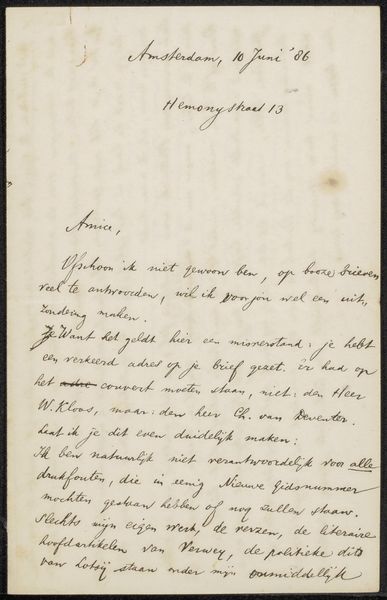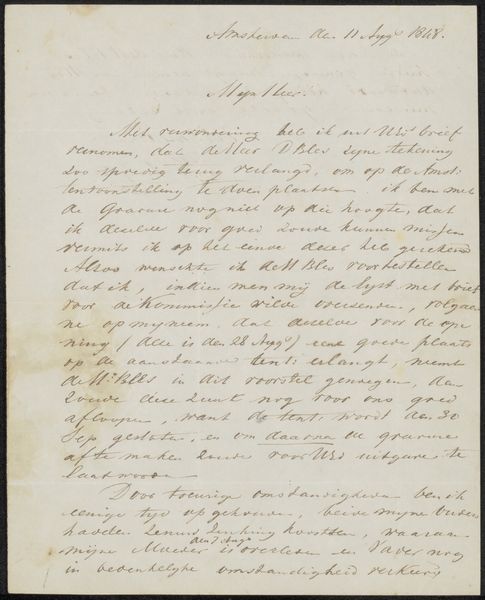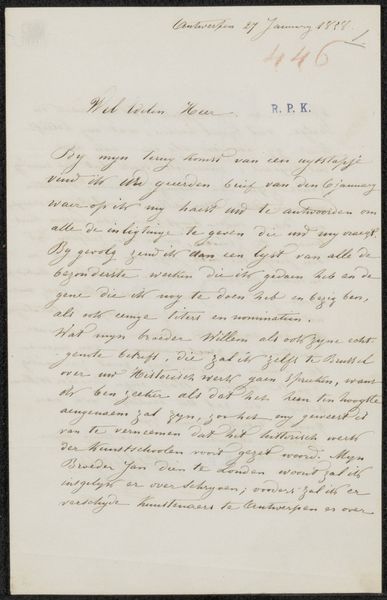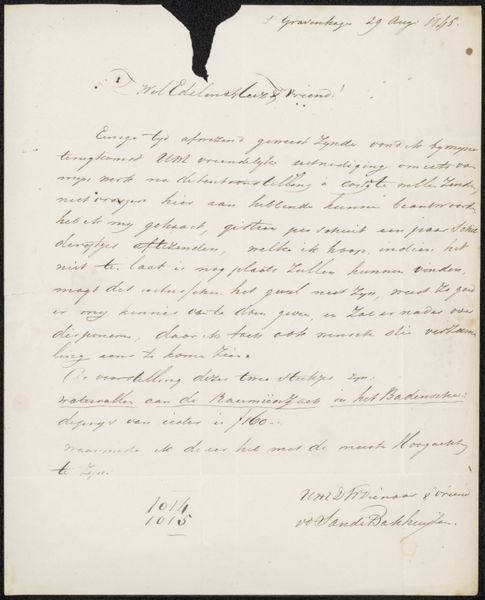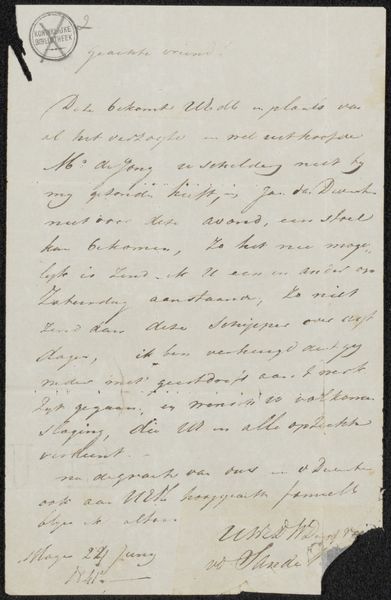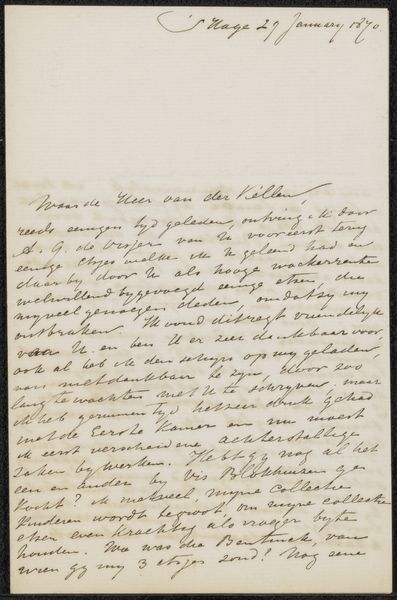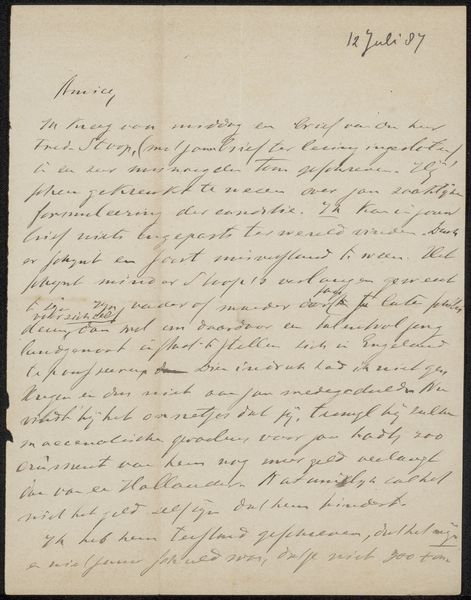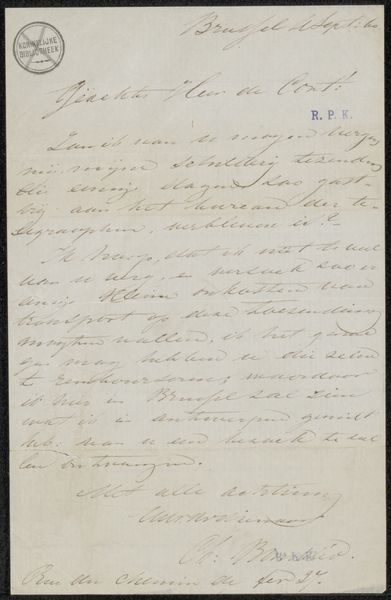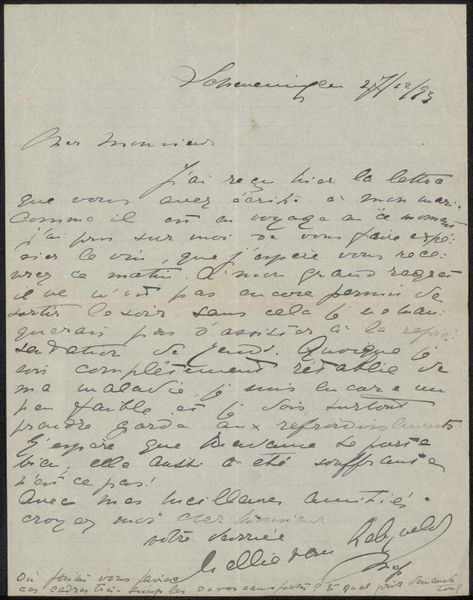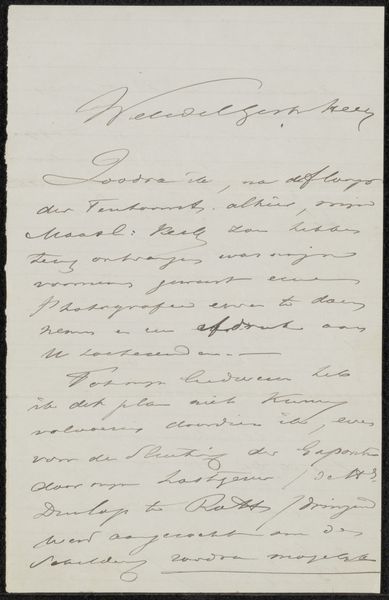
Copyright: Rijks Museum: Open Domain
Editor: Here we have "Brief aan Henriette Wilhelmina van Baak," possibly from 1926 by Dagmar Frandsen. It’s an ink drawing, a handwritten letter really. The faded ink gives it such an intimate, fragile feel. What strikes you about it? Curator: I'm drawn to the process, the physical act of writing itself. Think about the materiality here. It’s not just information being conveyed, but the slow build up of intention through handwritten strokes, layer upon layer using the medium of ink. What sort of labor was involved? Editor: I see what you mean! It’s easy to forget the time and effort involved in simply creating something like ink. And then to meticulously write…it highlights the effort and intention, not like our disposable emails today. Curator: Exactly. We have to consider the social context too. Frandsen chose this medium, ink on paper, within a particular system of artistic and material production. Is the handwriting easy to decipher, do you think? Does legibility alter our reception of the letter as artifact? Editor: Not entirely, no. It’s partially obscured. But that adds to the mystique somehow. Like uncovering a hidden story… Curator: Precisely! It makes us more aware of the layers of production and reception, the time elapsed between the writer's hand and our eyes. A seemingly simple piece can reveal so much about the relationship between artist, materials, and viewer. Editor: This really makes me think differently about everyday items as artworks. It is much more than just information. Curator: Absolutely. By thinking about the process, the material, we give renewed consideration of things. It provides an appreciation of how everything we see has been assembled in some manner by an active process.
Comments
No comments
Be the first to comment and join the conversation on the ultimate creative platform.

